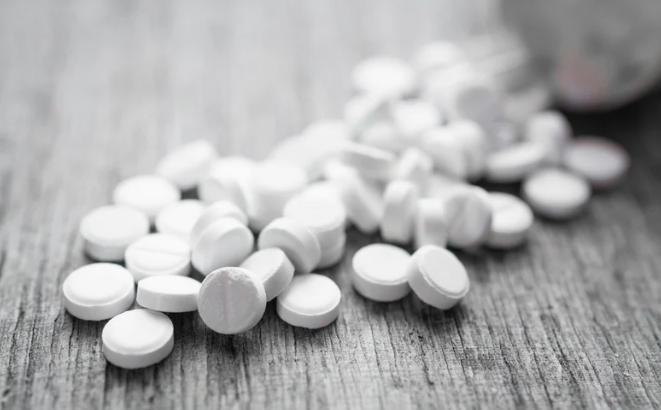
Attempts to Combat Moral Hazard in MOUD Treatment Could Be Deadly
Despite MOUD being one of the strongest evidence-based tools for combatting the opioid crisis, hundreds of thousands of Americans do not have access to this life saving care (National Institute on Drug Abuse, 2023). In 2021, just 1 in 5 of the 2.5 million people with OUD used medications (Jones et al., 2023). A variety of barriers prevent patients from accessing MOUD including stigma, fear, cost and logistical barriers. Research demonstrates that the cost of obtaining these medications, in both patients with and without insurance, is perhaps the most significant barrier (Bremer et al., 2023). As federal policies are reducing barriers for MOUD and more insurers are covering it, important questions about the moral hazard these changes arise (Saunders & Panchal, 2023). I argue that moral hazard does apply here, but it is important to consider how the concept might manifest differently in this context.
Moral hazard occurs when lowering the cost of healthcare increases utilization, which can lead to wasteful spending (Gross & Notowidigdo, 2024). I think the moral hazard applies to MOUD in terms of increasing utilization, but I would argue that decreasing out-of-pocket costs for MOUD will not lead to increased waste. Since evidence shows that 78% of those with OUD are not taking buprenorphine or methadone with cost being the commonly cited reason, it is likely that insurance covering MOUD will lead to greater utilization (Bremer et al., 2023). I don’t believe that there will be an increase in wasteful spending due to more of this care being administered. MOUD is tightly controlled, and only patients who absolutely need it can get it. Evidence shows that those with severe OUD are more likely to receive MOUD compared to those with mild OUD, which demonstrates that those who need it most are able to access it more readily (Jones et al., 2023). Because of the evidence that only those who really need MOUD will be able to access it, I do not think that the increased wasteful spending component of the moral hazard concept applies in this context. I would also argue that any spending on MOUD, even for patients with mild MOUD, is not wasteful due to the massive costs they would save insurers when their customers are properly treated. For instance, one study estimated that MOUD saves $15,000 to $90,000 in healthcare spending per patient over a lifetime (Fairley et al., 2021). This makes sense when considering the costs an insurer bears covering medical care, especially overdose treatment, for a person with untreated OUD.
One moral hazard mitigating strategy mentioned by Rostamkalaee et al (2022) is demand side cost sharing. This involves charging insurance enrollees deductibles and copayments with the intent that these higher costs will decrease demand (Rostamkalaee et al., 2022). I think that such a policy for MOUD would be destructive for the patients who are in most need of life-saving treatment. Data shows that treatment costs are significant barriers to obtaining MOUD and I think that cost sharing would defeat the purpose of insurances expanding coverage to include methadone and buprenorphine. Cost sharing would certainly decrease the number of patients who decide to get MOUD but that is opposite of our goal of increasing access. Additionally, such a measure would only exacerbate existing disparities in who uses MOUD; most are majority white, non-Hispanic, and >35 (Jones et al., 2023). Insurances employing cost sharing would only make it more difficult for the patients who already cannot access MOUD to obtain it.
Do you think emphasizing the potential savings would be a useful strategy to incentivize insurance companies to cover MOUD without cost sharing?
References
Bremer, W., Plaisance, K., Walker, D., Bonn, M., Love, J. S., Perrone, J., & Sarker, A. (2023). Barriers to opioid use disorder treatment: A comparison of self-reported information from social media with barriers found in literature. Frontiers in Public Health, 11, 1141093. https://doi.org/10.3389/fpubh.2023.1141093
Fairley, M., Humphreys, K., Joyce, V. R., Bounthavong, M., Trafton, J., Combs, A., Oliva, E. M., Goldhaber-Fiebert, J. D., Asch, S. M., Brandeau, M. L., & Owens, D. K. (2021). Cost-effectiveness of treatments for opioid use disorder. JAMA Psychiatry (Chicago, Ill.), 78(7), 767–777. https://doi.org/10.1001/jamapsychiatry.2021.0247
Gross, T., & Notowidigdo, M. J. (2024). Better health economics. University of Chicago Press.
Jones, C. M., Han, B., Baldwin, G. T., Einstein, E. B., & Compton, W. M. (2023). Use of medication for opioid use disorder among adults with past-year opioid use disorder in the US, 2021. JAMA Network Open, 6(8), e2327488. https://doi.org/10.1001/jamanetworkopen.2023.27488
Koohi Rostamkalaee, Z., Jafari, M., & Gorji, H. A. (2022). A systematic review of strategies used for controlling consumer moral hazard in health systems. BMC Health Services Research, 22(1), 1260. https://doi.org/10.1186/s12913-022-08613-y
National Institute on Drug Abuse. (2023, August 7). Only 1 in 5 U.S. adults with opioid use disorder received medications to treat it in 2021. National Institute on Drug Abuse. https://nida.nih.gov/news-events/news-releases/2023/08/only-1-in-5-us-adults-with-opioid-use-disorder-received-medications-to-treat-it-in-2021
Saunders, H., & Panchal, N. (2023, July 11). Addressing the opioid crisis: A look at the evolving landscape of federal OUD treatment policies. KFF. https://www.kff.org/mental-health/issue-brief/addressing-the-opioid-crisis-a-look-at-the-evolving-landscape-of-federal-oud-treatment-policies/
Post a comment